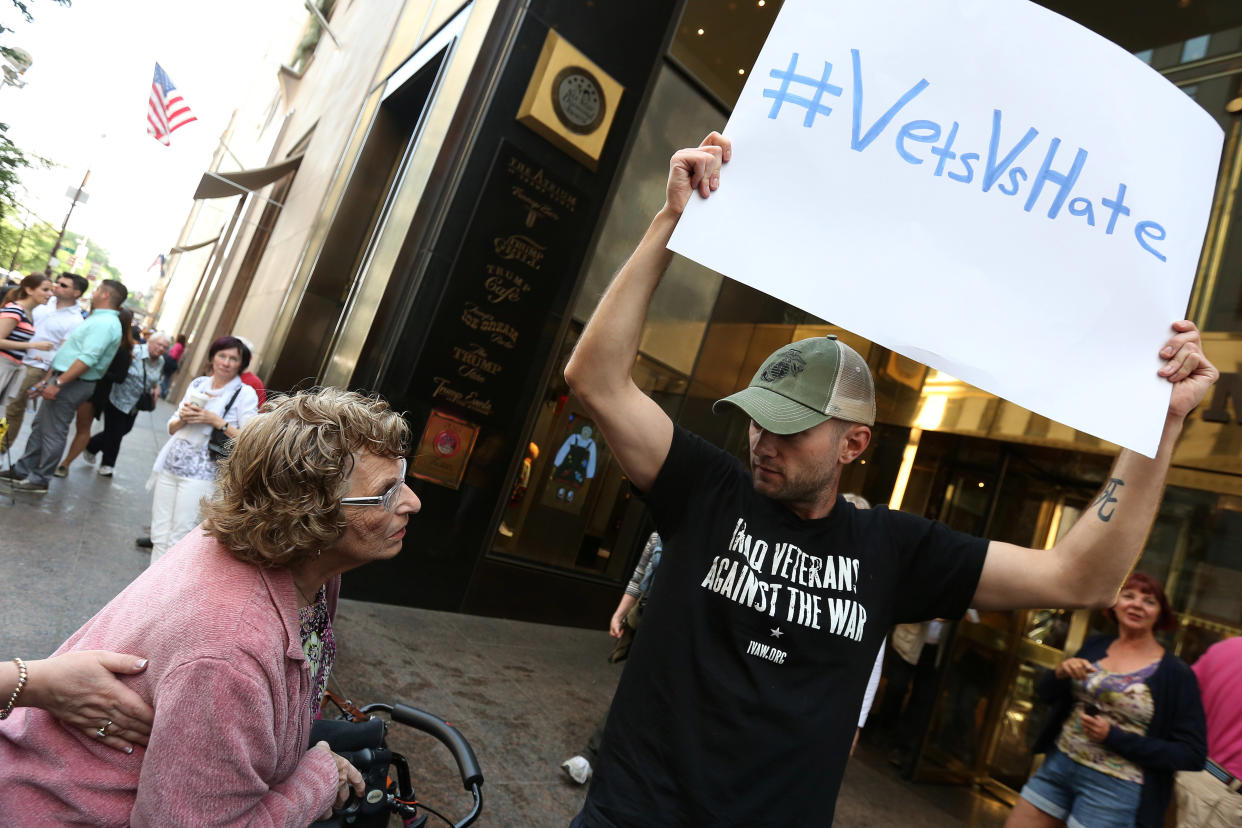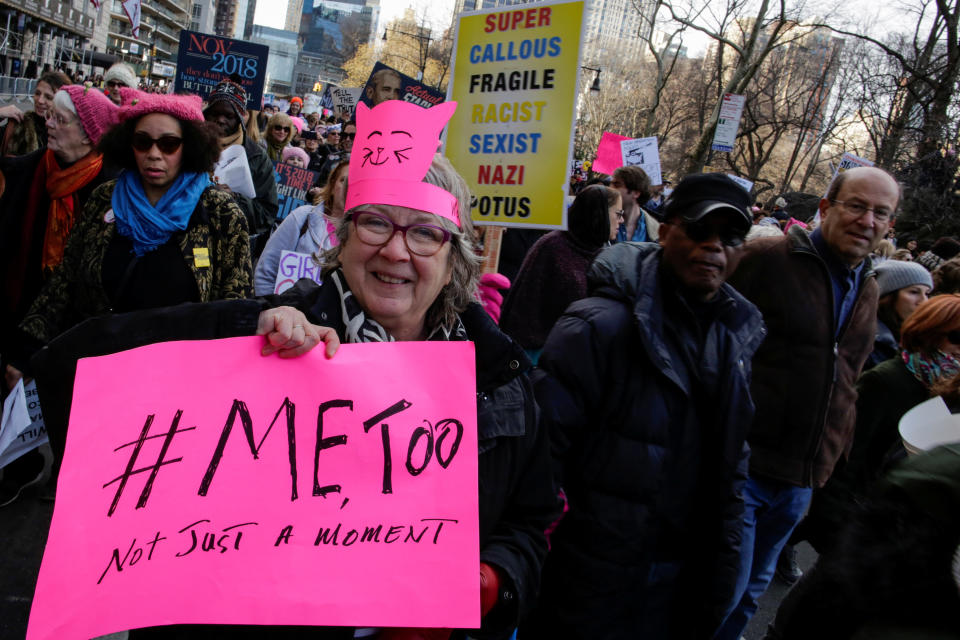Is The Left Having A Senior Moment?

Last year, activist Michael Morrill found himself nearing retirement age and thinking more and more about about issues important to older Americans. Alarmed by President Donald Trump’s reactionary agenda and concerned about the comparatively small number of progressive advocacy groups focusing on seniors, he decided to take a stab at remedying that problem. Morrill, now 63, who founded and previously led the Pennsylvania affiliate of People’s Action, a national progressive advocacy group, gave his new grassroots organization an endearingly cheeky name: Greyroots Action.
He said he hopes to bring a slew of senior issues to the table by turning Greyroots Action into an “elder American” (his preferred term for senior citizens) version of MoveOn, which leverages its extensive member database to ally itself with a host of progressive causes.
In these politically fraught times, the founding of a liberal advocacy group might not seem terribly groundbreaking. After all, the Trump administration has been a lighting rod for progressives from virtually every major American demographic group. This White House has helped spur the Women’s March, the Immigrants’ March and the March for Our Lives and further galvanized Black Lives Matter, among other already extant movements.
What makes Greyroots notable is that there hasn’t been a similarly large-scale effort to mobilize older voters. To be sure, there is a long history of progressive coalition building that has appealed to seniors about preserving entitlements, and there are numerous organizations and coalitions aggressively focusing on these issues. Social Security Works, for one, is an influential progressive organization that advocates for bolstering safety net programs and has been organizing grassroots efforts to keep the issue of entitlement programs at the forefront of local elections.
However, Morrill wants to see senior groups engage in more of the the grand, nationwide coalition building and resource pooling that has helped fuel interest in other liberal resistance movements. The Women’s March partnered with powerful national groups like the American Federation of Teachers, the National Resource Defense Council and MoveOn. There is even a broad progressive coalition planning nationwide protests if Trump fires special counsel Robert Mueller or meddles in his investigation into Russian interference in the 2016 presidential election.
“There really wasn’t anything that was working to organize seniors in a way that was progressive and independent,” said Morrill, alluding to a number of unions and progressive groups that have senior-focused initiatives but aren’t wholly focused on older voters.
In interviews with HuffPost, activists offered various reasons for the lack of a sweeping and coordinated mobilization of anti-Trump seniors. Some, including Morrill, pointed to the numerous but fragmented initiatives and organizations focused on seniors that already exist, saying that weaving all those together has proved difficult. Many praised the nation’s largest organization of retired Americans, AARP, for its work advocating against last year’s attempts to repeal Obamacare but noted that it does not engage in the same full-throated, picket-sign-wielding, on-the-ground activism as the Trump resistance.
Reached for comment, AARP spokesman Colby Nelson disputed the notion that AARP isn’t vigorously pursuing its agenda.
“Every day, AARP works to protect seniors, advance the policy issues that matter most to them and hold politicians accountable,” said Nelson. “From keeping Social Security and Medicare cuts off the agenda to protecting people’s health care from numerous repeal attempts, AARP has fought and delivered for Americans 50-plus and their families for 60 years.”
Other progressives said seniors are among the most politically active voters in the country, showing up to the polls at higher rates than other Americans. As many campaign managers will attest, retired political volunteers, with years of experience at work or home, are often among a campaign’s most valued supervols, or super volunteers.

Andrea Miller, 64, who is a co-executive director of People Demanding Action, where she works on crafting messaging for promoting Social Security and Medicare, echoed Morrill’s concerns about expanding senior advocacy to include more than just protecting those programs. Miller, who has been working with the NAACP on get-out-the-vote initiatives aimed at older Americans of color, said such issues include repealing the numerous voter ID laws that have been proposed or enacted across the country, which disproportionately disenfranchise older voters, and mitigating the impact of student loan debt on older Americans, who often co-sign their children’s and grandchildren’s loans.
Nearly everyone who spoke with HuffPost agreed that Democrats and progressives need to develop a more aggressive long-term strategy to appeal to older voters, who voted for Trump over Hillary Clinton 52 to 45 percent in 2016.
“How are we going to change the minds of American elders who should naturally be progressive?” asked Morrill, who cited the popularity among seniors of keeping government control of entitlement programs that Republicans have been trying to privatize for years.
In this, demographics may be working to the left’s favor. A report published in April by the Center for American Progress, the Brookings Institution, the Bipartisan Policy Center and the Public Religion Research Institution, forecasted that African-Americans, a staunchly Democratic constituency, will make up an increasingly larger portion of the over-65 electorate in the next five presidential campaign cycles as the percentage of more conservative older white voters flatlines.
Activists also see an increasing synergy between progressive seniors and the Medicare-for-all movement most recently popularized by Sen. Bernie Sanders (I-Vt.).
Jon Bauman, the president of the Social Security Works PAC (and perhaps best known as Bowzer from the 1970s rock band Sha Na Na), anticipates that senior citizens, the principal beneficiaries of Medicare, will play an increasingly crucial role in the movement to expand the medical insurance program to all Americans.
Bauman, 70, believes that should Trump or the Republican-controlled Congress make a major push at privatizing Social Security or Medicare, a large Women’s March–style movement of seniors could materialize across the country. Already, he says, he has seen an increased presence of seniors at campaign rallies.
“I think there is an impending sense of, ‘Oh, my God, this is not want I want to leave to my children and grandchildren’ that has activated seniors even beyond the level that they were before,” he said.
Love HuffPost? Become a founding member of HuffPost Plus today.
This article originally appeared on HuffPost.

